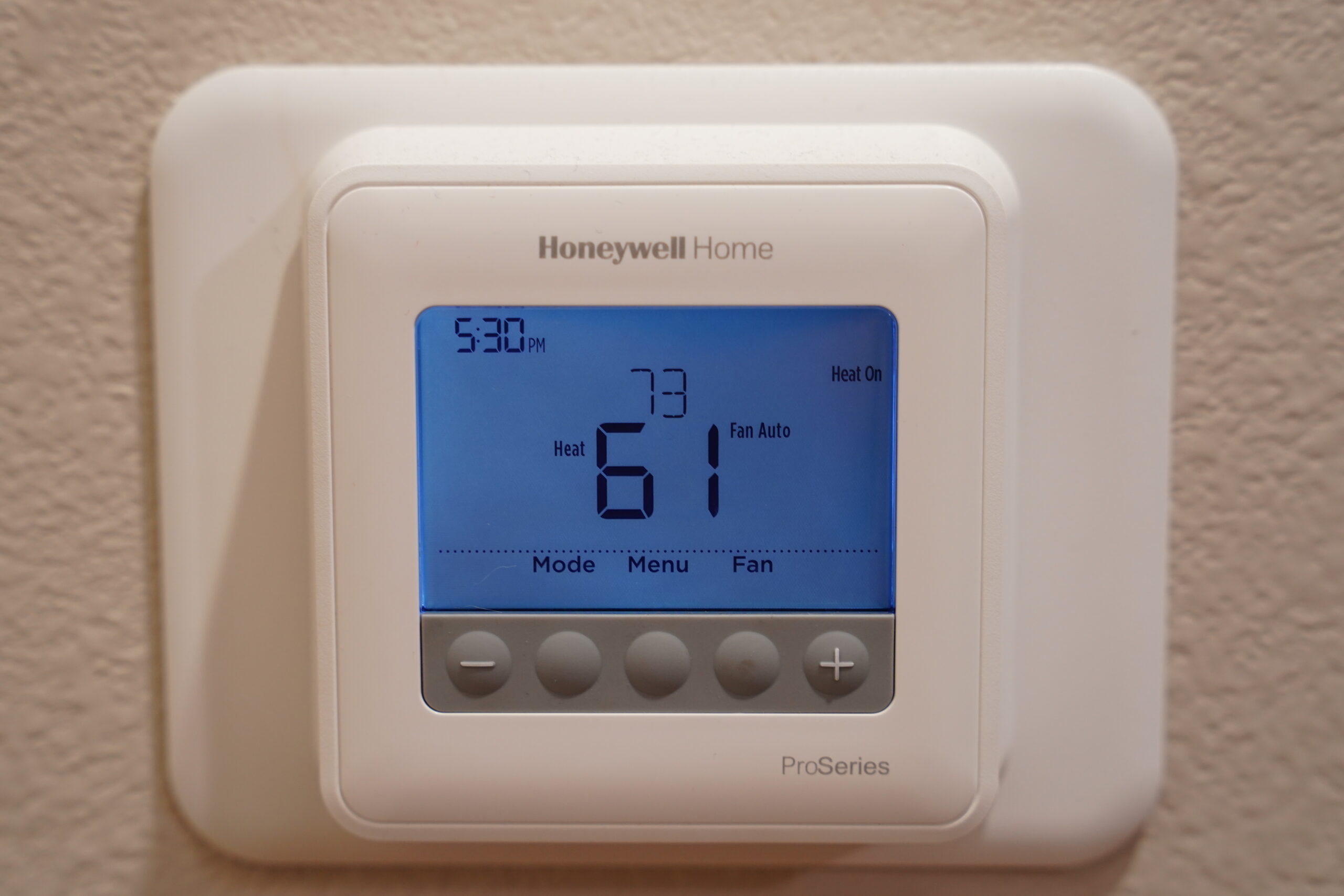If your Honeywell thermostat is not working, you’re not alone. Many homeowners in Fort Smith, Arkansas, face thermostat issues that disrupt their heating and cooling systems. A malfunctioning thermostat can lead to discomfort, energy inefficiency, and higher utility bills. While some troubleshooting steps can help, it’s crucial to contact a professional HVAC technician to properly diagnose the issue.
At Riverside Comfort Care, we specialize in resolving thermostat and HVAC system issues, ensuring your home remains comfortable year-round. In this guide, we’ll walk you through common thermostat problems, troubleshooting steps, and why upgrading your HVAC system might be the best solution.
Common Reasons Your Honeywell Thermostat Is Not Working
A thermostat controls your HVAC system, so when it malfunctions, your heating or cooling may not function properly. Here are some common reasons why your thermostat may not be working as expected:
1. Unresponsive Thermostat Screen
An unresponsive screen can be frustrating, but several factors could be causing this issue:
- Dead batteries – Many Honeywell thermostats rely on batteries, and if they’re dead, the screen won’t display anything.
- Power supply issues – If your thermostat is hardwired, a tripped breaker or a wiring issue could be the culprit.
- Blown fuse – HVAC systems have fuses that protect electrical components. If a fuse blows, the thermostat may stop functioning.
Solution:
- Replace the batteries and see if the screen powers on.
- Check the circuit breaker and reset it if needed.
- If the thermostat is hardwired, a professional HVAC technician should inspect the wiring to ensure everything is correctly connected.
For more guidance, check out Honeywell Home’s Official Thermostat Support.
2. Incorrect Temperature Readings
Your thermostat may display the wrong temperature, making your HVAC system work inefficiently. This could be due to:
- A malfunctioning sensor – Over time, sensors can wear out or become dirty, leading to inaccurate temperature readings.
- Incorrect placement – If your thermostat is near a heat source, such as a window, vent, or appliance, it may register higher temperatures than the actual room temperature.
- Calibration issues – Some Honeywell thermostats may need recalibration to ensure accurate temperature readings.
Solution:
- Move the thermostat away from direct heat sources.
- Clean the thermostat and check for dust accumulation around the sensor.
- If recalibrating does not help, contact a professional for a thorough inspection.
3. HVAC System Not Responding
Sometimes, your HVAC system may not respond to the thermostat, even when you adjust the settings. Possible reasons include:
- Faulty wiring – Loose or damaged wiring can disrupt the connection between the thermostat and HVAC system.
- Tripped circuit breaker – If the breaker has tripped, your system won’t function until it’s reset.
- Incorrect settings – Ensure your thermostat is set to the correct mode (heat, cool, or auto) and that the temperature is properly adjusted.
Solution:
- Verify that all thermostat settings are correct.
- Check the breaker box for tripped circuits and reset them if necessary.
- If the problem persists, call a professional to diagnose the issue properly.
Learn more about HVAC troubleshooting at HVAC.com’s Thermostat Troubleshooting Guide.
How to Troubleshoot a Honeywell Thermostat
Before calling a technician, try these troubleshooting steps to resolve minor thermostat issues:
1. Perform a Reset
Many Honeywell thermostat models allow users to reset the system, which can fix minor glitches. To reset your thermostat:
- Turn off the power to the thermostat.
- Remove the batteries or hold the reset button (depending on the model).
- Wait for 30 seconds before reinstalling the batteries or turning the power back on.
2. Check the Power Supply
If your thermostat isn’t powering on, make sure:
- The batteries are fresh and installed correctly.
- The circuit breaker hasn’t tripped.
- The thermostat is securely connected to the wall mount and wiring.
For energy-efficient HVAC maintenance, refer to the U.S. Department of Energy’s Heating & Cooling Guide.
3. Verify Thermostat Settings
Sometimes, incorrect settings can prevent your HVAC system from operating efficiently. Ensure:
- The system is set to “Cool” in the summer and “Heat” in the winter.
- The fan setting is on “Auto” instead of “On” to avoid constant air circulation.
- The desired temperature is correctly set and higher/lower than the current room temperature.
4. Update Firmware & Software
For Wi-Fi-enabled Honeywell thermostats, outdated firmware can cause malfunctions. To update:
- Check the Honeywell app for any available software updates.
- Ensure your thermostat is connected to Wi-Fi for automatic updates.
Upgrading Your Home’s HVAC System with a Smart Thermostat
If you frequently experience thermostat issues, it may be time to upgrade. Smart thermostats offer enhanced functionality and efficiency compared to older models.
1. Benefits of a Smart Thermostat
- Energy efficiency – Automatically adjusts temperature settings to reduce energy consumption. Learn more at Energy Star’s Smart Thermostat Guide.
- Remote access – Control your thermostat from anywhere using a smartphone app.
- Smart scheduling – Learns your routine and optimizes heating and cooling cycles.
- Integration with HVAC systems – Works seamlessly with modern heating and cooling equipment for improved comfort.
Why Call Riverside Comfort Care?
When dealing with a malfunctioning thermostat, professional help is essential. Our expert technicians at Riverside Comfort Care offer:
- Accurate diagnostics to determine the root cause of the issue.
- Reliable repairs to restore your Honeywell thermostat’s functionality.
- Preventative maintenance to keep your HVAC system running smoothly year-round.
- Installation of high-quality smart thermostats for improved energy efficiency.
For expert thermostat troubleshooting and HVAC services in Fort Smith, Arkansas, call Riverside Comfort Care today at (479) 353-5266!



